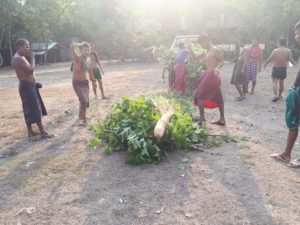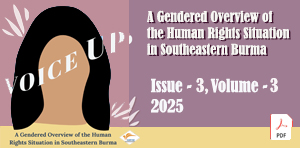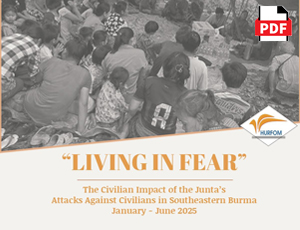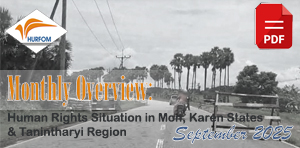Thousands of kratom trees destroyed by MNLA in Kyar Inn Seik Kyi Township indicates need for more effective drug treatment options
March 18, 2019
HURFOM: According to reports, on March 1st 2019 Mon National Liberation Army (MNLA) forces razed a kratom plantation located near Hnint Wae village, Kyar Inn Seik Kyi Township, Karen State.
Under the direction of the the New Mon State Party (NMSP) in Kyar Inn Seik Kyi, MNLA forces entered the property and destroyed thousands of kratom trees grown as a cash crop by the owner.
“The number of trees was in the thousands, so we had to use two trucks to bring them to our district base. I think there are a lot of kratom trees left behind…We haven’t destroyed them all,” said Nai Jee, the Secretary of the NMSP in Kyar Inn Seik Kyi.
 The NMSP secretary also stated that the plantation’s owner had fled the area following the MNLA’s clearance operations. According to villagers, the plantation owner had been selling kratom leaves for many years until the MNLA moved on the plantation to destroy the crops.
The NMSP secretary also stated that the plantation’s owner had fled the area following the MNLA’s clearance operations. According to villagers, the plantation owner had been selling kratom leaves for many years until the MNLA moved on the plantation to destroy the crops.
In recent years, kratom has replaced beer and liquor as the drug of choice for many in Mon state and other areas of southeastern Burma. Today, it is not uncommon to find “kratom liquor” (a mixture of kratom, cough syrup, instant coffee, and soft drinks) served to guests at household events and village celebrations. Some homeowners are also said to distribute methamphetamines (yaba) among their guests.
Drug use in Kyar Inn Seik Kyi Township is believed to have increased beginning in February 2017, when the NMSP withdrew from several checkpoints to decrease escalating tensions with the military at the time. Following the NMSP’s withdrawal, reports of the trade and use of illicit drugs in the area rose dramatically. Independent research conducted by both the Mon Youth Progressive Organization (MYPO) and the NMSP’s anti-drug team in 2017 estimated that 70 percent of youth in Kyar Inn Seik Kyi had experimented with drugs.
Mixed-control of Kyar Inn Seik Kyi Township by the NMSP, the Karen National Union (KNU), and the Burma government further complicates matters, for there is no unified administrative apparatus in place to coordinate anti-drug efforts.
 This latest clearance operation comes nearly one year after representatives from the Mon State National-level Political Dialogue called on the military and ethnic armed organizations (EAOs) to combine their efforts in combatting drugs. While there is no evidence that the government and EAOs have heeded this call, reports that the drug trade is in part fueled by police corruption suggest that such efforts may prove only to be symbolic in scope.
This latest clearance operation comes nearly one year after representatives from the Mon State National-level Political Dialogue called on the military and ethnic armed organizations (EAOs) to combine their efforts in combatting drugs. While there is no evidence that the government and EAOs have heeded this call, reports that the drug trade is in part fueled by police corruption suggest that such efforts may prove only to be symbolic in scope.
When considering the scale of drug use in Kyar Inn Seik Kyi Township and throughout Mon populated areas of Mon State and southeastern Burma, it is clear that more effective drug treatment options are sorely needed. If resources can be channeled to providing users with medical treatment, psychotherapy, and vocational training, individuals and communities will be better able to return to full health.
Comments
Got something to say?
You must be logged in to post a comment.



















































